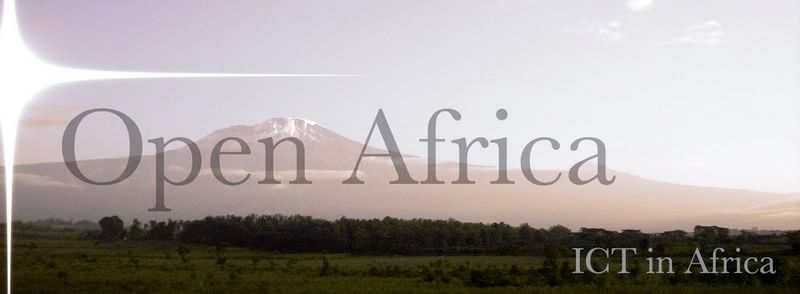
Archive
• March 2006• April 2006
• July 2006
• August 2006
• December 2006
• January 2007
• March 2007
• April 2007
Tuesday, April 17, 2007
The development of the East African Submarine Cable System (EASSy) has gradually transformed into a powerplay of an increasing number of stakeholders. The Association of Progressive Communications (APC) has published an analysis of the stakeholders, their power and interest positions and sheds renewed clarity in the complex EASSy discussion.
The establishment of the East African Submarine Cable System, popularly known as EASSy, is important for the further socio-economic development of the eastern part of Africa. The project started approximately four years ago.
EASSy is the proposed US$300 million1, 9,900km fibre optic submarine cable that will connect the east coast of Africa to the world's network of international high capacity submarine cables. Mtunzini (located just north of Durban) in South Africa will host one end of EASSy, and Port Sudan in Sudan the other end. In between, EASSy will have landing points in seven other countries.
This project would greatly increase the accessibility of the connected countries to high speed, high bandwidth connectivity, as well as enable the development of new products and services that would otherwise have not been possible due to bandwidth restrictions. Through the development of back-haul transmission networks, EASSy will be able to improve the connectivity between African countries and reduce the cost of communication within and between them and expand the possibility of intra-Africa trade.
In spite of the high urgency of EASSy, the progress of the project has been slow in coming. In the paper A Stakeholder Analysis of the of the East African Submarine Cable System the APC Policy researcher for the African region, Abiodun Jagun, analises the reasons behind this slow progress. According to the paper the key to the delays is the uncertainty around the ownership and management of the cable, which in turn influence the terms and conditions that will govern access to its capacity by non-members (i.e. entities that do not hold shares in the cable). The ownership of EASSy was initially conceived under a Closed Consortium Ownership, similar to the SAT3/WASC submarine fibre optic cable. Disappointing performance of SAT3/WASC in terms of improved and low-cost broadband internet access has prompted interest groups to urge for the adoption an Open Access model for EASSy.
With the start of the discussion on the modalities of the Open Access model and its operational hybrid variants, the complexity has grown. The new players and the new stakes have created an impasse. Through an analysis of the stakeholders the paper tries to create clarity in understanding and navigating the current state of play and developing scenarios of the future of the project
The author has decided to apply Power-Interest matrices as a tool for analysis to better understand the position of 15 identified stakeholders in the decision making process. The paper first analises individual stakeholders and continues to look at the coalitions that were formed in the course of the Open Access discussion. This last aspect is interesting since it clearly shows that some groups were able to improve their position in the process and and increase their influence in the decision making. In the last of the three matrices the role of NEPAD in the EASSy project is examined. The analysis shows two competing groups; one the NEPAD Protocol coalition, and the other the Submarine Fibre Consortium. It identifies that the powerful position initially held by the Consortium has been diluted, and that the impasse has created high levels of uncertainty about the viability of the EASSy project.
Although the analysis provides interesting insights on the levels of power and interest of the stakeholders, the reader remains in the dark about the data and methodology used to justify the classifications. The identification and grouping of the stakeholder could have been documented better. But also the way in which they were plotted in the Power-Interest matrices definitely needs to be explained in more detail. This would give other researchers an easier possibility to validate and extend on this research.
In spite of these methodological shortcomings of the paper, it provides an important analysis for everyone who wants to understand the process of the development of EASSy. It also shows that times are changing. As Mike Jensen already noted in his APC issue paper on Open Access Models, a growing number of people are painfully aware that the mistakes made with the SAT3/WASC cable should be avoided at all costs if improved access to low-cost internet connectivity is to be realised for Africa.
This review was writen for the World Dialogue on Regulation
0 Comments:
Previous Posts
• Als het voor ons goed is, waarom gebruiken jullie ...• Mobile Banking - An African Practisioners Perspective
• ICT for SME's in Africa
• Covergence and Regulation in West and Central Africa
• The secret of AfrISPA
• Appropriate Technology in Action
• And Now Back to Civilization
• Relapse - 1
• FOSS Wannabies
• Shareware?
Associated with
• East African Center for Open Source Software• World Dialogue on Regulation
• Global Text Project
• Livre
Free Software

The template is generated via PsycHo.